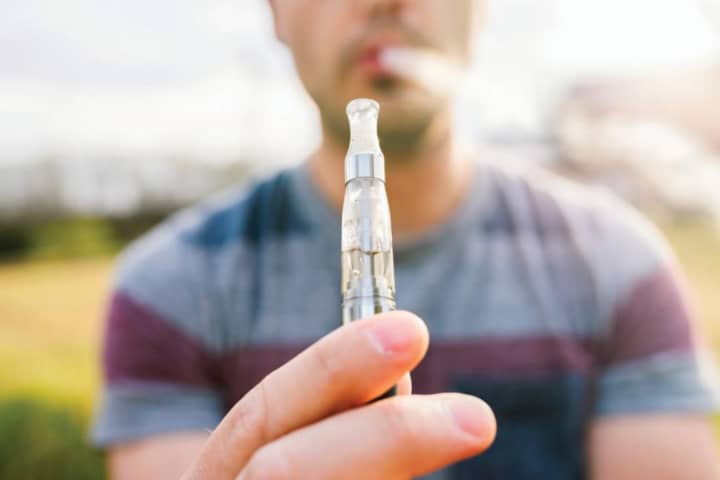Juul’s popularity is also linked to the fact that users can “ghost” its vapor — it doesn’t create a telltale cloud like other e-cigarettes. Ghosting allows vaping in the classroom because teachers can’t see it. And since e-cigs are disguised to look like pens, USB drives or asthma inhalers, they’re easy to hide in plain sight at home, school – you name it.
E-cigarette makers claim they don’t market to kids. Yet the Food and Drug Administration’s (FDA) 2016 “National Youth Tobacco Survey” found that e-cigs are the most commonly used tobacco product among middle school and high school students. About a third of the youths surveyed said that “fun” flavors are one reason they vape. But there are plenty of un-fun risks.
Vaping liquid is full of harmful substances. The Centers for Disease Control has found plenty of bad stuff in e-cigarette aerosol: ultrafine particles that can be inhaled deep into the lungs; diacetyl, a flavoring chemical linked to lung disease; cancer-causing chemicals such as formaldehyde; and heavy metals including nickel, tin and lead.
Nicotine is never your friend. It’s highly addictive, even in e-cigs. Research shows that nicotine addiction is notoriously difficult to kick. Only about six percent of smokers manage to quit in any given year. Plus, perhaps because the adolescent brain is still developing, nicotine may get more of a “hold” on teens than adults.
E-cigarettes may explode. The lithium ion batteries in some e-cigarettes have exploded in users’ pockets and even in their mouths, causing serious injury like burns, scarring and loss of teeth. According to the Federal Emergency Management Agency (FEMA), there were 25 exploding battery cases between 2009 and 2014. More recently, an e-cig battery explosion caused a fatality.
You don’t know what you’re buying. E-cigarettes are still not as tightly regulated as regular cigarettes. The FDA just began to regulate liquids and electronic nicotine delivery systems in 2016. This spring, e-cig products will require warning labels about the health risks of nicotine.
In New York State, vaping is prohibited wherever smoking is prohibited, including in schools. Purchasing e-cigarettes is illegal for children under the age of 18 in New York State, and under 21 in some counties. We know the long-term health effects of cigarette smoking; research to determine if e-cigarettes are just as lethal has only just begun. In the meantime, it’s smart to talk to your kids.
Learn more about smoking cessation resources by visiting bit.ly/tobacco-ctrl.
For more information about Phelps Hospital visit phelpshospital.org.


